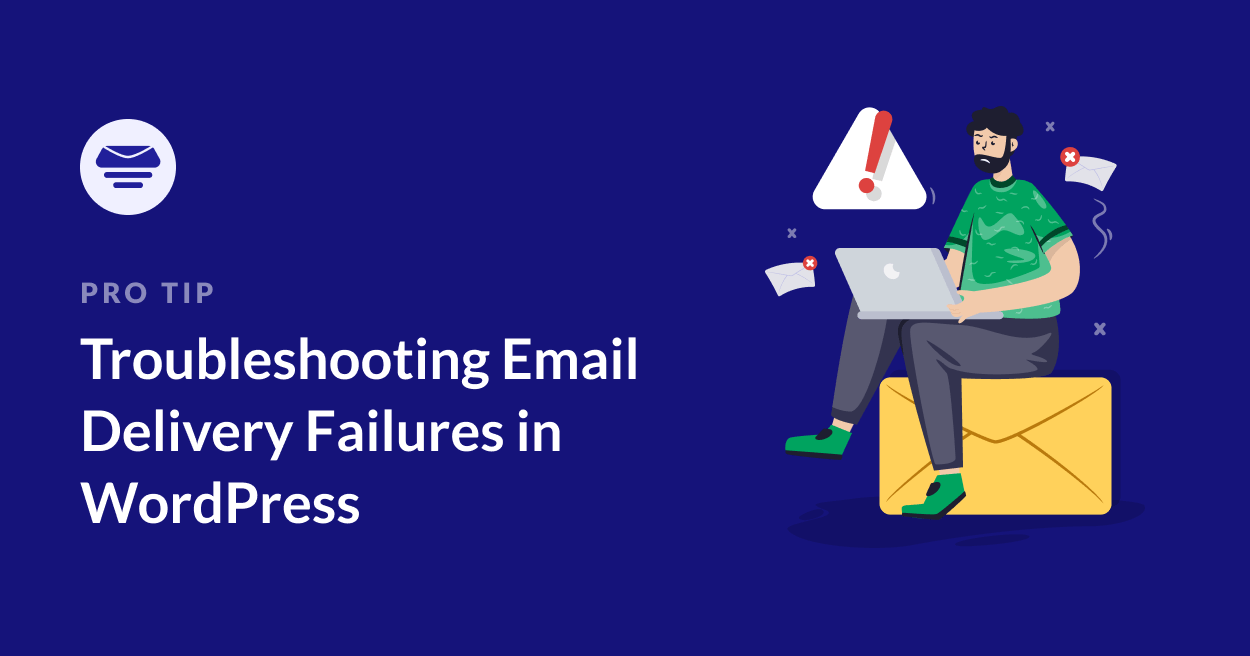Are you scratching your head over email delivery issues in WordPress?
Many people face the frustration of their WordPress site emails failing or disappearing. The good news is that most email sending issues are solvable with the right know-how.
In this in-depth guide, I’ll dive deep into the world of WordPress email troubleshooting. I’ll explore common causes of email delivery failures in WordPress, provide step-by-step solutions, and share best practices so those emails land in the inbox, where they belong.
Understanding WordPress Email Delivery
Before jumping into troubleshooting, it’s important to understand how WordPress handles emails. If you’ve been in the WordPress game for as long as I have, you’ve probably encountered your fair share of email headaches, and I’m about to explain why!
By default, WordPress uses the PHP mail() function to send emails. This function works (sometimes) but it’s not ideal. It’s a basic system that leans heavily on your server’s configuration to do the heavy lifting.
For small sites or blogs where you’re just sending the occasional comment notification, this setup might suffice. But let me tell you, once your site starts growing, or you’re running an e-commerce store, you’ll want to take another look at how you’re managing your site emails.
The PHP mail() function doesn’t provide any authentication mechanisms, which can result in emails being marked as spam or rejected by receiving mail servers.
Moreover, many hosting providers disable or limit the PHP mail() function to prevent abuse, which can cause email delivery failures even for legitimate websites.
This is why I advise WordPress users use more reliable email delivery solutions, such as SMTP (Simple Mail Transfer Protocol) or API-based email services.
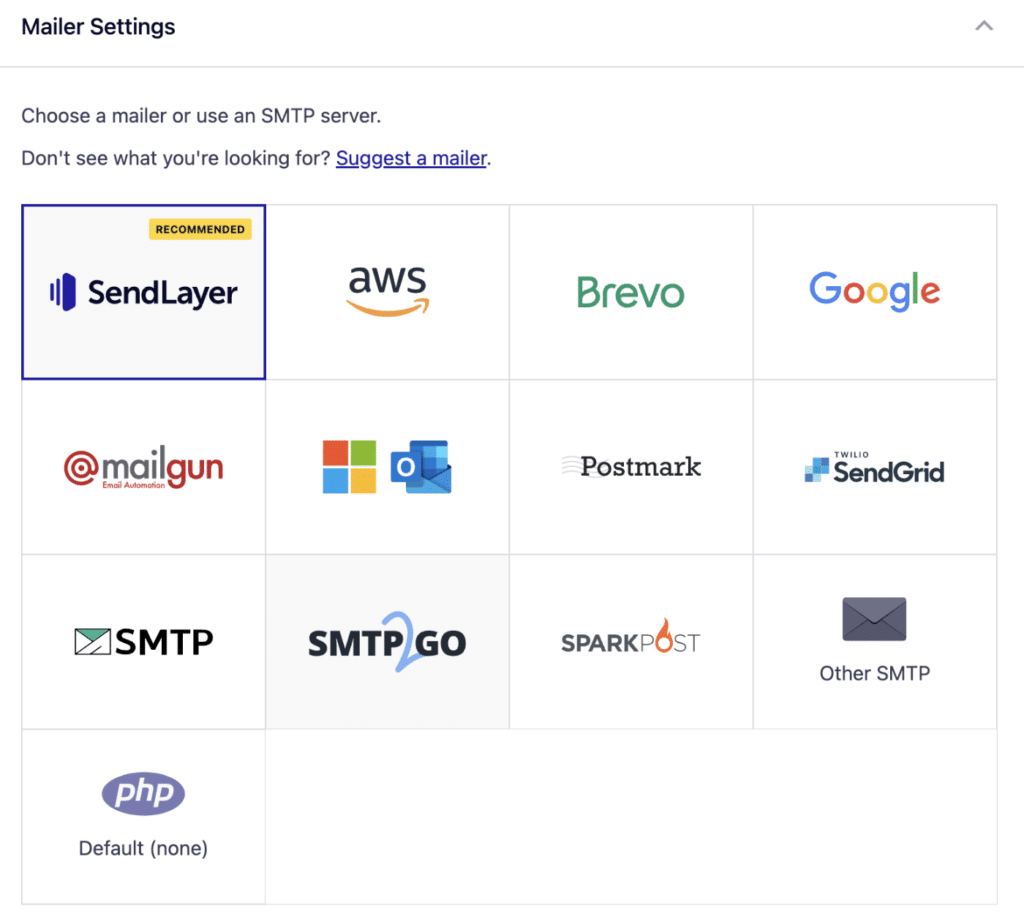
I know it sounds confusing! But trust me, if you’re using an SMTP plugin like Easy WP SMTP, it’s super simple to set up, and there’s even a free version you can use if you don’t need any of the advanced features.
Common Causes of Email Delivery Failures
Your WordPress emails can fail to send or be delivered for several reasons:
- Invalid recipient email addresses: This is often the result of typos during email entry or outdated email lists. When an email is sent to an invalid address, it bounces back, which may affect your sender reputation over time.
- Emails flagged as spam: Users might mark your email as spam or the email service provider can mark your message as spam before it even gets to the inbox. Lack of authentication, trigger-happy spam words, or a less-than-stellar domain reputation can all send your emails straight to spam jail.
- Incorrect mailer configuration: I’ve spent more late nights than I care to admit hunting down misplaced API keys or incorrect port numbers. If your WordPress site emails aren’t working, incorrect information in your SMTP plugin setup is the culprit, nine times out of ten.
- Poor sender reputation: If your domain or IP address has been associated with spam in the past, email providers may be more likely to reject or filter your emails.
- Server-side issues: Sometimes, the problem isn’t you – it’s your server. I remember one particularly frustrating case where emails weren’t sending because the host had blocked the necessary ports. So make sure to try a different email service if you’ve checked everything else.
- Exceeding sending quotas: Slow and steady wins the race, especially when it comes to email quotas. For example, it’s probably not a good idea to send out 10,000 emails in one go on a shared hosting plan. Exceeding these limits can result in temporary blocks.
- Poor deliverability optimization: This includes factors like email content quality, sending frequency, and list hygiene practices that affect how likely your emails are to reach the inbox. That’s just the tip of the iceberg. If your emails are sending correctly but not hitting the inbox, you’ve probably got some work to do here.
Understanding these common causes is the first step in effectively troubleshooting and resolving email delivery issues in WordPress.
How To Fix Email Delivery Failures in WordPress
After years of managing WordPress sites and tackling email delivery issues, the same issues come up time and time again.
Let’s explore some practical solutions that can make a real difference in your email performance.
1. Validate Recipient Email Addresses
Invalid email addresses are a common cause of delivery failures. To solve this problem, I always recommend implementing email validation on your forms. This can be done using JavaScript for instant feedback.
Consider using a form plugin like WPForms that offers built-in email validation features. These plugins often include features like typo detection and syntax checking to catch common mistakes before they enter your system.

Double opt-in for subscriptions is another practice that I recommend to anyone who has a newsletter signup form on their site. It might seem like an extra step, but it’s invaluable for ensuring that the email address is valid and that the owner genuinely wants to receive your emails.
Regular list cleaning is also essential. Even the most meticulously maintained lists accumulate invalid or inactive addresses over time. It’s a good idea to review your lists every few months, removing any addresses that consistently bounce or remain inactive.
2. Prevent Your Emails from Being Flagged as Spam
Keeping your emails out of the spam folder is crucial for successful delivery. Use authentication protocols like SPF, DKIM, and DMARC to verify your emails’ legitimacy. These protocols help receiving mail servers verify that your emails are actually coming from your domain. Google and Yahoo are now blocking unauthenticated emails, so it really is a must.
Avoid using spam trigger words in your subject lines and content. Words like “free,” “guarantee,” and “no obligation” can trigger spam filters.
Maintain a consistent sending volume and frequency. Rapidly increasing your email volume can look suspicious to email providers. I’ve personally seen the effect of suddenly increasing mail volume for a big promotion, and trust me, it’s not pretty! The sudden spike in spam complaints and the long-term negative effect on sender reputation just isn’t worth it.
Use a recognizable “From” name and email address. Consistency here builds trust with both recipients and email providers. You might also want to consider BIMI authentication, which displays your logo in the inbox and helps to protect your brand.
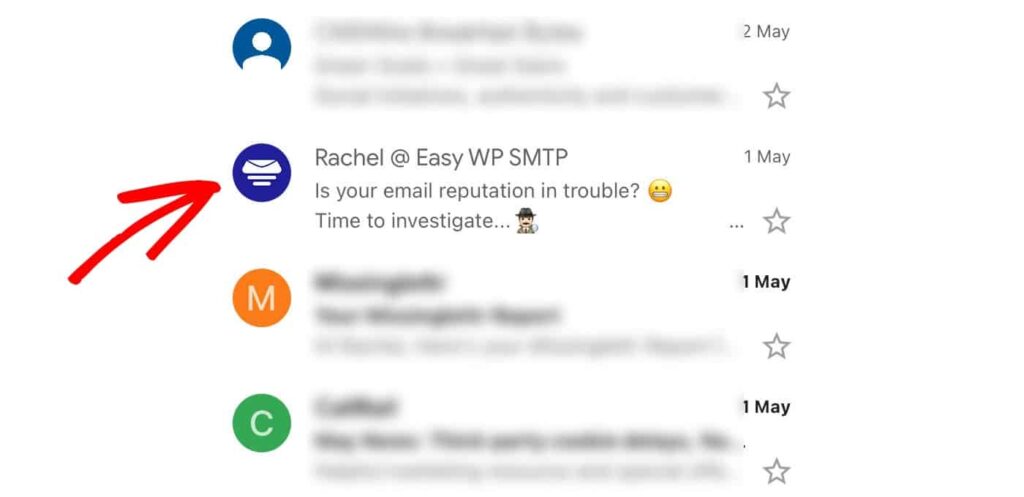
And don’t forget to include an unsubscribe link in all marketing emails! This is not only a legal requirement in many jurisdictions (and a necessary requirement for Google, Yahoo, and many other email providers) but also helps prevent recipients from marking your emails as spam.
3. Configure Your Mailer Correctly
Proper configuration is essential for reliable email delivery. Verify your SMTP settings carefully. This includes the SMTP host, port, encryption type (usually TLS or SSL), and authentication details. Double-check all API keys and credentials if you’re using a third-party email service.
I can’t tell you the number of times I’ve configured Easy WP SMTP and my test email has failed (I test a lot of email services!) – it’s almost always down to incorrect SMTP credentials.
Ensure your “From” email matches your domain. Using a free email service like Gmail or Yahoo for your “From” address can hurt deliverability.
If you’re using Easy WP SMTP, take advantage of its email testing feature to verify your configuration.
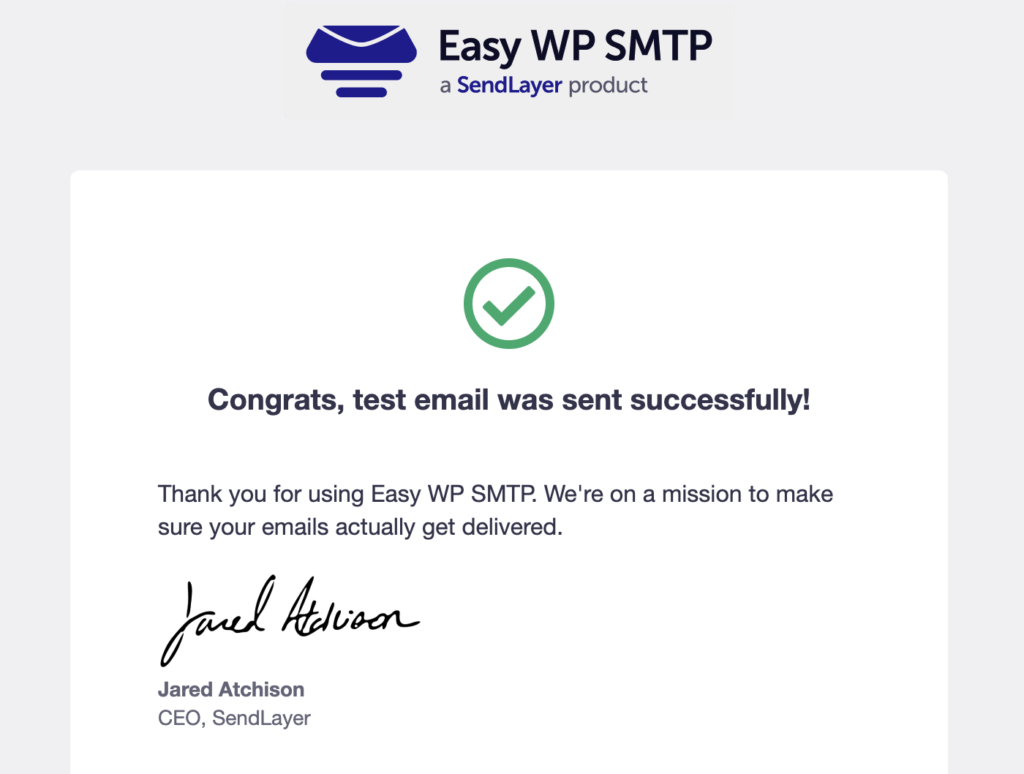
4. Improve Your Sender Reputation
Sender reputation is something I’ve come to think of as the credit score of the email world. It’s invisible, but it has a massive impact on your email deliverability.
Focus on sending relevant, engaging content that your subscribers want to receive. High engagement rates (opens, clicks) signal to email providers that your emails are valuable.
Dealing with inactive subscribers is a delicate balance. One of my colleagues recently implemented a re-engagement campaign, followed by cutting her list almost by half. It was nerve-wracking to see the list size shrink, but the improvement in overall engagement was undoubtedly worth it.
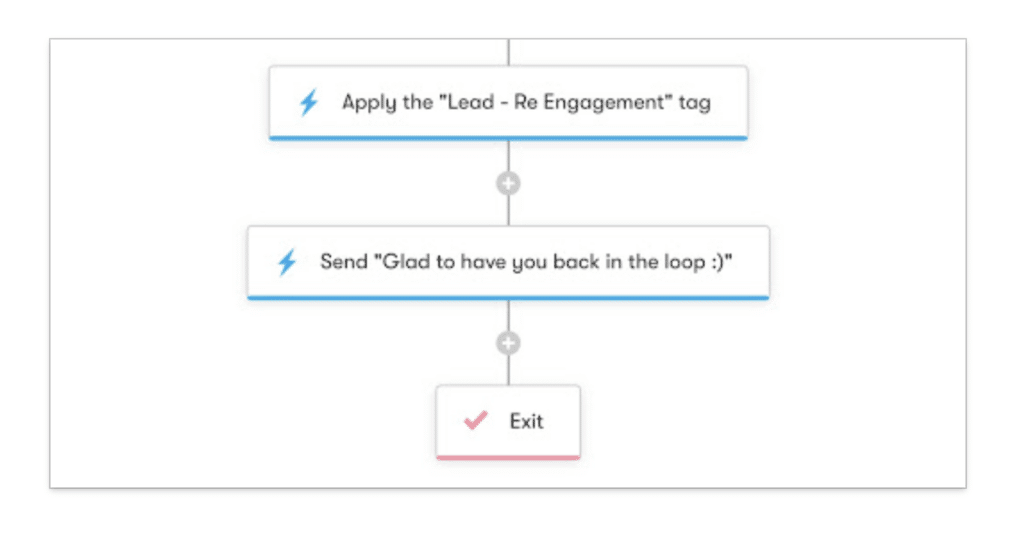
Stick to a consistent sending schedule to establish predictable patterns that email providers recognize as trustworthy. We made the mistake of sending a one-off promotional email to a list that we didn’t contact regularly and definitely won’t be making that mistake again!
Bounce handling is also crucial. Hard bounces (permanent delivery failures) should be removed from your list immediately. Soft bounces aren’t so critical, but it can be helpful if you have some kind of automation activated that will automatically remove emails from your list after a certain number of bounces.
And don’t forget to encourage recipients to add your email address to their contact list or safe senders list. A gentle reminder in welcome emails and occasionally in the email footer is a small action for the recipient but can have a significant positive impact on deliverability.
5. Address Server-Side Issues
Server problems can disrupt email delivery, even if everything else is set up correctly. Regularly review your server error logs for any email-related issues. Look for patterns or recurring errors that might indicate a systemic problem.
Verify that your server’s IP address isn’t blacklisted. You can use online tools like MXToolbox to check your IP against major blacklists.
It’s a good idea to configure a backup SMTP server to ensure continuity if your primary SMTP server experiences an outage. Easy WP SMTP allows you to set up multiple mailers and automatically switch to a backup connection if your primary email service fails.
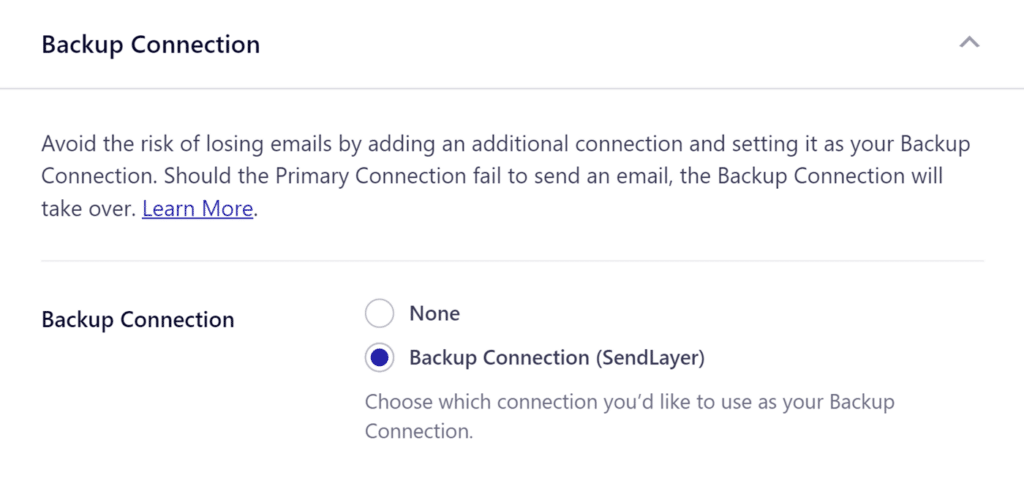
You can also configure email failure alerts so you’ll get a notification through email, Slack, Microsoft Teams, SMS, or a platform of your choice if an email fails to send.
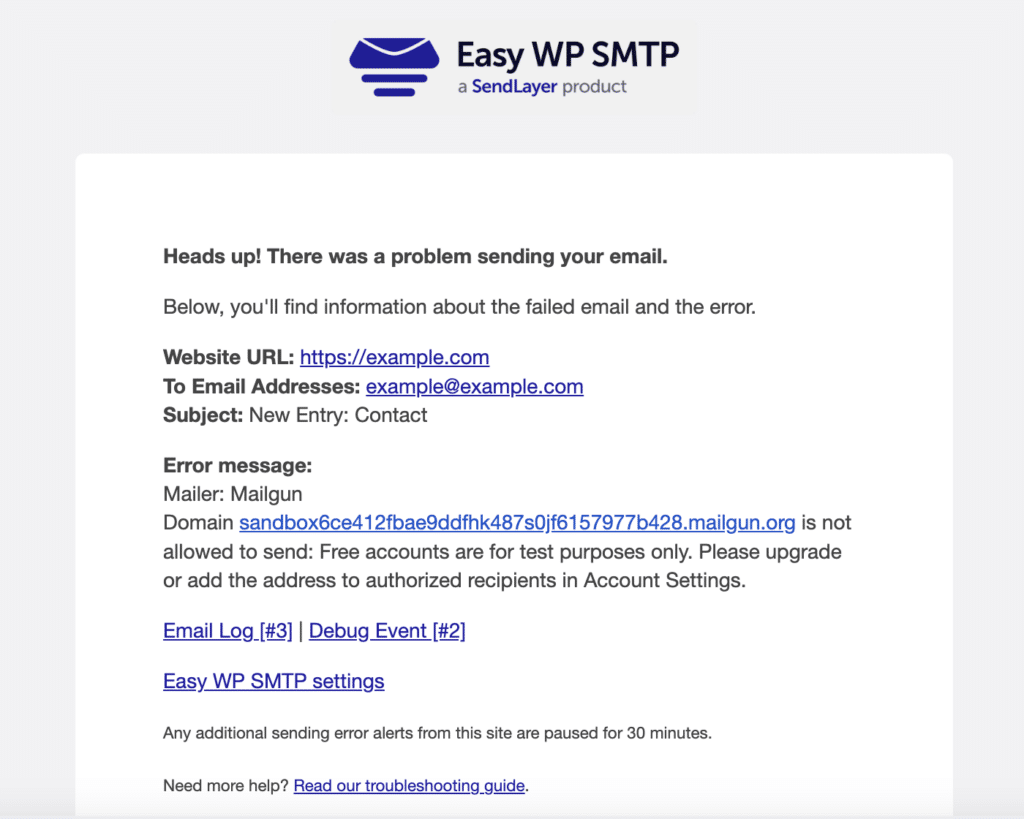
6. Manage Your Sending Quota
Most email service providers set limits on how many emails you can send. To avoid exceeding these limits, monitor your email sending volume closely. Keep track of how many emails you’re sending daily and weekly.
If you’re planning to bulk-send a lot of emails (perhaps for a sale or special marketing campaign) you can stagger your emails to spread them out over a longer period. This can help to avoid hitting your email provider’s rate limits.
You can also use Easy WP SMTP’s smart email routing feature to spread out your emails across two or more different providers. For example, you could send email newsletters with one provider and your important transactional emails with another.
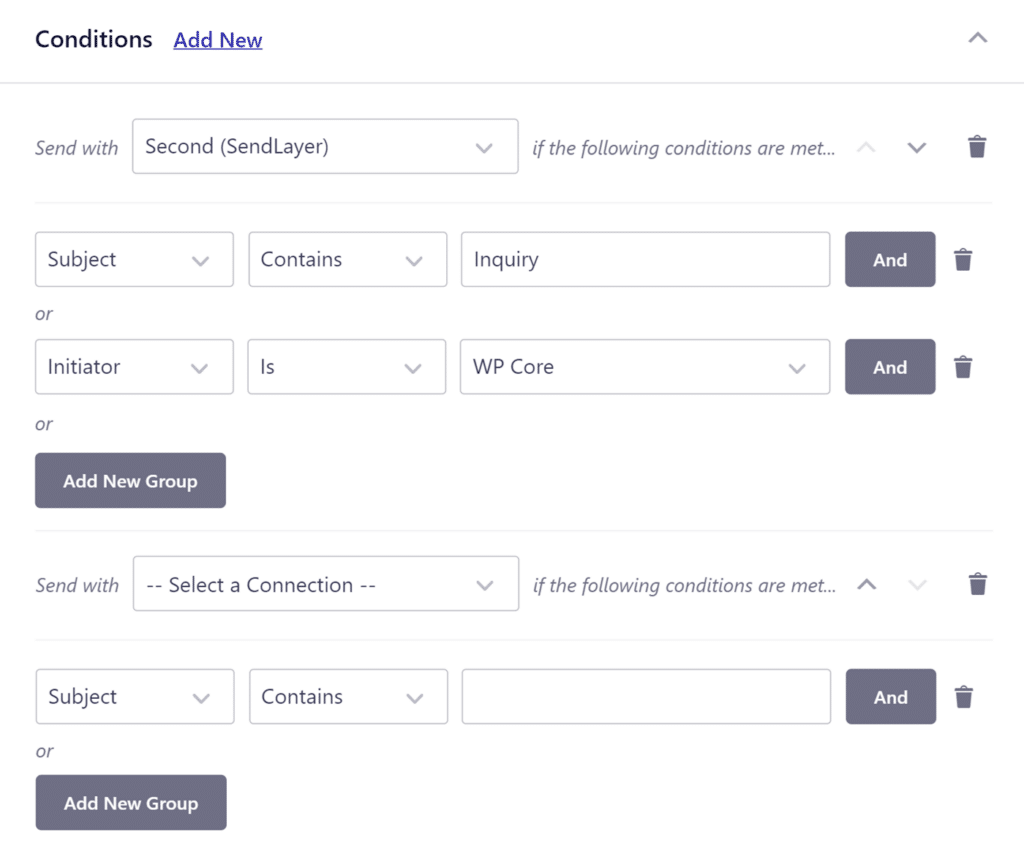
But keep in mind that if you consistently hit the limits of your email provider, it might be time to upgrade your plan or switch to a provider that can accommodate your needs.
Best Practices for WordPress Email Management
Maintaining healthy email practices is an ongoing process. Set up a regular schedule to test your email functionality. Send test emails to different email providers (Gmail, Outlook, Yahoo, etc.) to ensure your emails are being delivered and displayed correctly.
Keep an eye on your delivery rates and other key metrics like open rates and click-through rates. Sudden drops in these metrics could indicate a delivery problem.
Stay on top of updates for WordPress and all email-related plugins. Outdated software can lead to security vulnerabilities and compatibility issues.
For important transactional emails (like order confirmations or password resets), consider using specialized services like SendLayer, SMTP.com, or Brevo. These services are designed to handle high-volume, time-sensitive messages reliably.
Implement email authentication protocols (SPF, DKIM, DMARC) if you haven’t already. These protocols help verify that your emails are legitimate and can significantly improve your deliverability.
Regularly backup your email lists and email-related WordPress settings. This can save you a lot of trouble if you ever need to migrate your site or recover from a crash.
Tools and Plugins for Better Email Delivery
Several tools can significantly improve your WordPress email delivery. Here’s a comparison of some popular options:
| Tool | Primary Function | Key Benefit |
| Easy WP SMTP | SMTP configuration | Improves email deliverability |
| SendLayer | Transactional email service | High-volume sending capability |
| WP Mail Logging | Email logging | Helps troubleshoot delivery issues |
Easy WP SMTP is particularly useful for solving many common WordPress email issues. It allows you to configure SMTP settings easily, even if you’re not technically inclined.
You can use multiple mailers, providing a fallback option if your primary mailer fails. The plugin also offers email logging for troubleshooting, allowing you to see exactly what’s happening with your emails.
Additionally, it includes a built-in email testing tool to verify your configuration.
Monitoring and Analytics for Email Performance
To ensure your email delivery remains optimal, it’s crucial to monitor your email performance regularly. Key metrics to track include:
- Delivery rate (the percentage of emails successfully delivered to recipients’ inboxes)
- Open rate (the percentage of delivered emails opened by recipients)
- Click-through rate (CTR, the percentage of email recipients who clicked on one or more links in your email).
- Bounce rate (the percentage of emails that couldn’t be delivered)
- Spam complaint rate (the percentage of recipients who marked your email as spam).
Many email service providers, like SendLayer offer built-in analytics dashboards.

Additionally, you can use tools like Google Postmaster Tools and Yahoo Sender Hub to keep an eye on spam complaints and other deliverability issues.
Frequently Asked Questions
Here are some of the most common questions our Easy WP SMTP support team gets asked about email delivery failures in WordPress:
Why are my WordPress emails going to spam?
Emails may go to spam due to lack of proper authentication, use of spam trigger words, or a poor sender reputation.
How can I test if my WordPress site is sending emails correctly?
You can use plugins like Easy WP SMTP or WP Mail Logging to test and monitor email functionality. Additionally, send test emails to accounts on various email providers.
What’s the difference between PHP mail() and SMTP?
PHP mail() is the default WordPress method but lacks authentication. SMTP provides better deliverability and security by using a dedicated mail server and authentication protocols.
How often should I clean my email list?
It’s recommended to clean your email list every 3-6 months to maintain good deliverability. However, you should remove hard bounces immediately..
Can changing my hosting provider solve email delivery issues?
In some cases, yes. Some hosting providers have better email configurations and fewer IP blacklisting issues. However, it’s often more effective to use a dedicated email service.
How can I reduce the number of emails WordPress sends?
You can use plugins like Easy WP SMTP to control which WordPress notifications are sent. But be cautious about disabling critical notifications.
Is it better to use a third-party email service or my hosting provider’s email service for my WordPress emails?
Dedicated transactional email services often provide better deliverability, analytics, and features compared to host-provided email services. They’re usually worth the investment for businesses relying on email communication.
How do SPF, DKIM, and DMARC improve email deliverability?
These authentication protocols help verify that emails are coming from legitimate sources, reducing the chance of being marked as spam. SPF specifies which IP addresses can send email for your domain, DKIM adds a digital signature to your emails, and DMARC tells receiving servers how to handle authentication failures.
Remember, email deliverability is an ongoing process that requires regular attention and optimization. Stay vigilant, keep testing, and don’t hesitate to reach out for help if you need to. The Easy WP SMTP team is always on hand for personalized advice if you need a helping hand.
